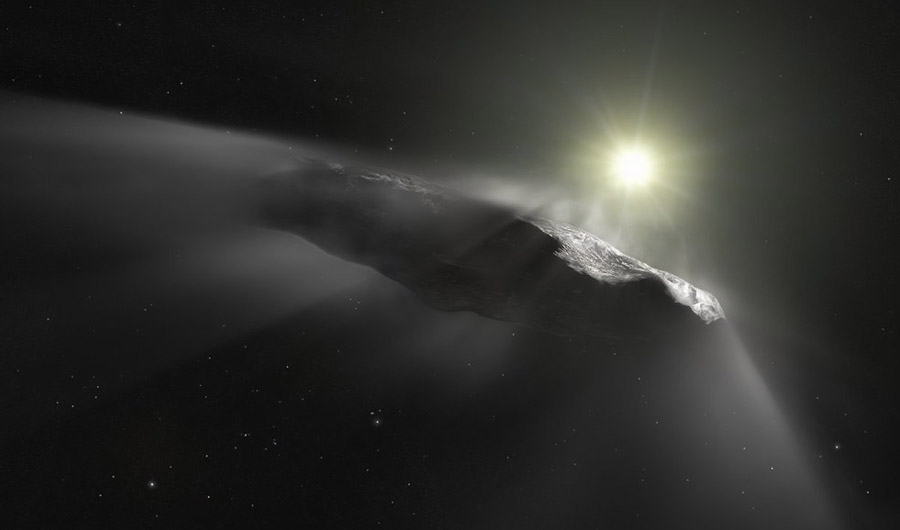Hundreds of Interstellar Objects May Visit Our Solar System Each Year

An artist’s impression of the interstellar object 'Oumuamua.
(Inside Science) -- In 2017, a cigar-shaped space rock named 'Oumuamua passed through our solar system -- the first interstellar object known to visit. Then in August of this year, amateur astronomer Gennady Borisov spotted another interstellar object, recently dubbed 2I/Borisov.
Now astrophysicists suggest such interstellar objects are likely slung into the interstellar void by vast numbers of as yet undetected giant planets.
Both 'Oumuamua and 2I/Borisov probably started life as planetary building blocks known as planetesimals. They could have been tugged away from their individual stars by the gravity of planets in other systems; however, most of the more than 4,000 exoplanets confirmed to date are too close to their parent stars to readily eject a planetesimal into interstellar space.
A new study finds the presence of the visitors may hint that large numbers of giant worlds could lurk in the outskirts around many stars. The existence of these exoplanets was suggested by data from the DSHARP survey, which analyzed 20 nearby, bright and large protoplanetary disks around newborn stars. Large gaps often seen in these disks of gas and dust were likely carved by planets, scientists noted.
The researchers on the new study estimated giant planets with masses on the order of Neptune's or larger may accompany roughly half of all young stars. These worlds are each likely located at a distance of at least 5 astronomical units (AU) from their stars. (An AU is the average distance between Earth and the sun, which is about 93 million miles, or 150 million kilometers.)
The great distances of such planets from their stars would help explain how planetesimals could get hurled into interstellar space. At the same time, interstellar objects can help scientists infer the existence of these exoplanets, whose distances from their stars make them extraordinarily difficult for current techniques to spot, said study lead author Malena Rice, an astrophysicist at Yale University.
Based on their results, the scientists estimated that when the Large Synoptic Survey Telescope becomes fully operational a few years from now, it may detect a few interstellar objects as big as 'Oumuamua or larger every year, and more than 100 interstellar objects roughly 6 feet (2 meters) wide annually. Once researchers get to analyze larger samples of interstellar objects, "we can get better clues of what extrasolar systems are made of, and if they are similar to the solar system or not," Rice said.
Rice and study senior author Gregory Laughlin detailed their findings online Sept. 13 in a study accepted for publication in journal The Astrophysical Journal Letters.

